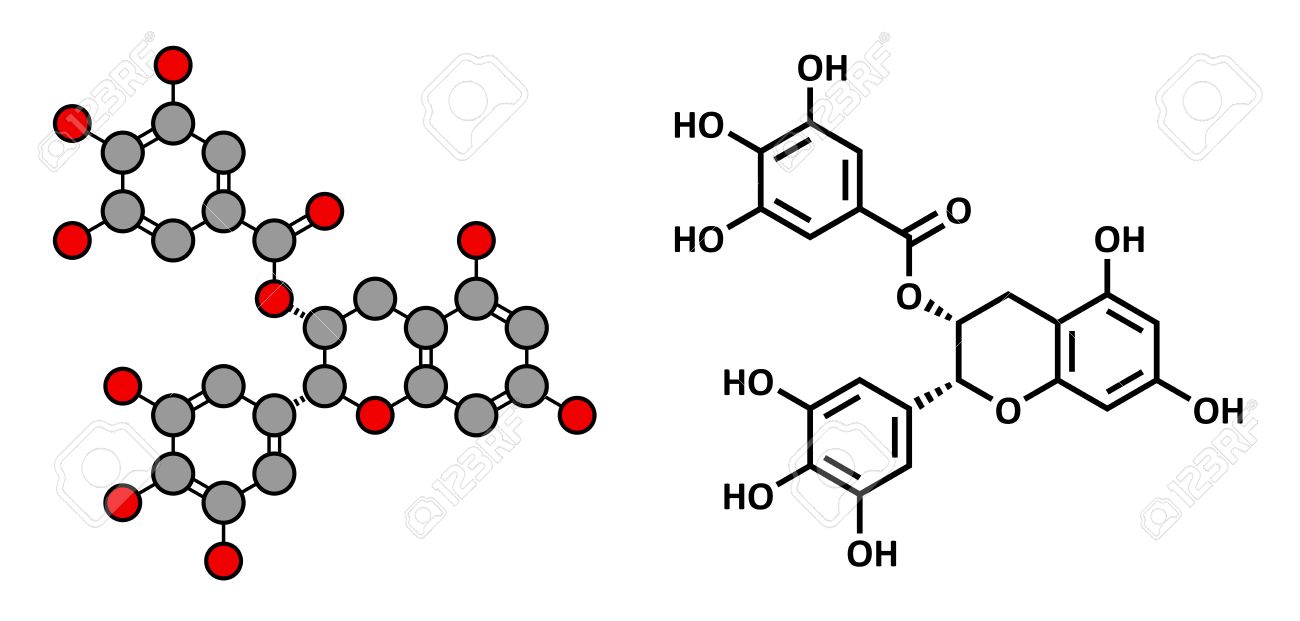Cervical cancer is the fourth most fatal disease which often attacks women. Nearly 18 thousand out of 33 thousand cases have caused death. A recent report stated that this case had almost doubled in 2015.
Epigallocatechin gallate or popularly abbreviated as EGCG is one of the ingredients isolated from natural products, such as tea, and has been tested for its activity as a potent antioxidant. EGCG is reportedly proven to have anticancer activity through several mechanisms, including inhibiting the formation of cancer cells, inhibiting the division of cancer cells, and inhibiting the formation of blood vessels in cancerous tissue.
For cervical cancer therapy, EGCG is proposed to be used for local treatment to be more effective. However, EGCG can enter or penetrate the skin is low due to the presence of phenolic groups in their chemical structure.
In this study, efforts have been made to increase the ability of EGCG penetration into the skin by optimizing the value of the partition coefficient close to the value 2-3, which is an indicator of the penetrating ability to the skin maximally. It is done by using a combination of surfactants, Tween 80, and Span 80, at several comparative values to achieve certain hydrophilic-lipophilic balance (HLB) values. HLB is an indicator of whether the material is more water-soluble or fat. The method used in this research is reverse micelle formation, where EGCG, which has been dissolved in phosphate buffer pH 5, is mixed with a combination of Tween 80 and Span 80. Then this mixture is shaken in two unmixed solvents, phosphate buffer 5 and n-octanol as an organic phase until balance condition is obtained where EGCG levels are stable in the phosphate buffer phase. Then the partition coefficient determination test is performed as an initial indicator for the penetrating material to the skin.
Based on this study, an increase of HLB value caused a decrease in the coefficient value of the modified EGCG-surfactant partition coefficient. Optimal EGCG modified partition coefficient values can be obtained by making a mixture of EGCG with Tween 80 and Span 80 at HLB value 6, where the modified partition coefficient value of EGCG-surfactant is at 2.1. Furthermore, the results of the cytotoxicity test on Hela cancer cells showed that the modification of EGCG-surfactant at HLB 6 resulted in higher effectiveness in inhibiting the growth of cancer cells than pure EGCG. It showed that the modification of EGCG-surfactant could penetrate cancer cell membranes better, which is possible due to changes in the solubility characteristics of EGCG to be more lipophilic or more fat-soluble.
To measure the efficacy of EGCG-surfactant modification penetration into the skin, an in vivo test was carried out on rats using Rhodamin as a marker of fluorescent EGCG entering the skin. After two hours of use, the results of the modification of EGCG-surfactant at HLB 6 showed a higher fluorescence intensity to the deeper layers of the skin (dermis area) compared to pure EGCG. The skin consists of lipid and protein components soluble in both water and fat so that EGCG trapped inside the reverse micelle will penetrate easily into it than pure EGCG.
Based on this research, EGCG has shown efficacy in inhibiting the growth of cancer cells, especially Hela cells, as one type of skin carcinoma cells. It has also shown improvement from its ability to penetrate deeper skin layers by modifying the partition coefficient value of the ingredients using a mixture of Tween 80 and Span 80 Further development of these substances into cream or ovule preparations can be an alternative in cervical cancer therapy.
Author: Andang Miatmoko, Ph.D., Apt.
Details of this research can be viewed in the following link:
https://www.future-science.com/doi/abs/10.4155/tde-2019-0015 Rosita N, Meitasari VA, Rianto MC, Hariyadi DM, Miatmoko A, 2019, Enhancing Skin Penetration of Epigallocatechin Gallate by Modifying Partition Coefficient Using Reverse Micelle Method, Therapeutic Delivery; 10(7): ahead of print. https://doi.org/10.4155/tde-2019-0015





